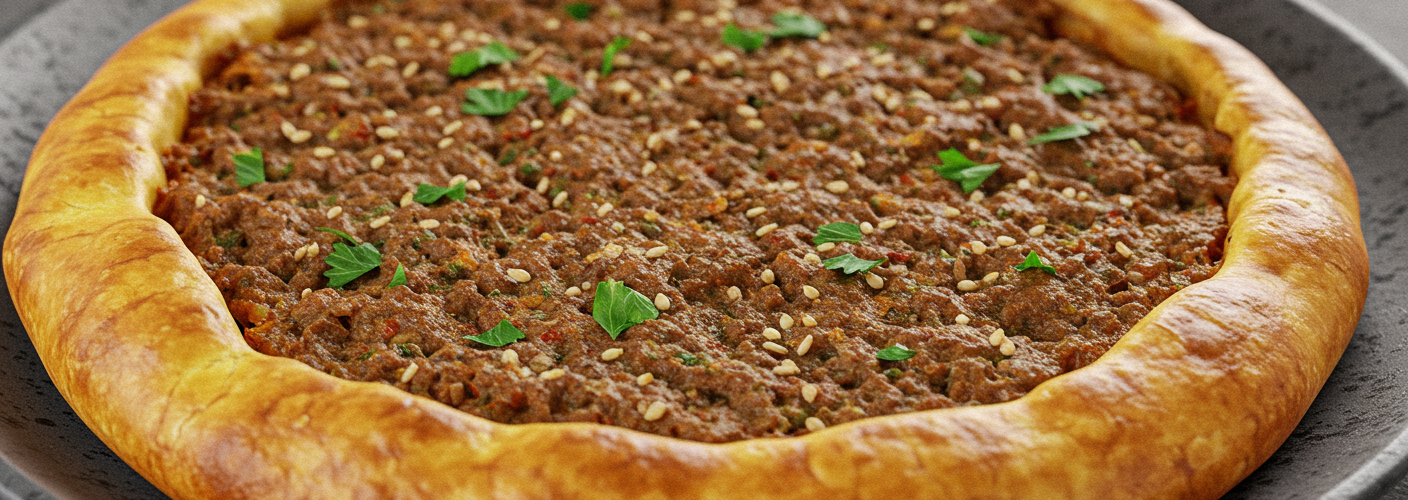Sfiha, a dish deeply rooted in Middle Eastern cuisine, is an open-faced pie often celebrated for its unique blend of flavors and textures. Characterized by its shallow form, it offers a canvas for various toppings, with seasoned minced sheep meat being the star ingredient. Originating from the Levant region, particularly prevalent in countries like Lebanon and Syria, sfiha is a testament to the delicious culinary heritage of the area.
An Overview of Sfiha
At its core, sfiha is a type of pastry that features a thin crust base topped with a mixture of finely chopped or ground lamb or sheep meat. The meat is typically seasoned with a mélange of spices that can include cinnamon, allspice, sumac, and nutmeg, creating a complex flavor profile that delights the palate. In some variations, vegetables such as tomatoes, onions, or pine nuts are also added, enhancing the dish’s richness and texture.
The crust of sfiha is important, as it should be soft and slightly chewy. It is usually made from a simple dough that consists of flour, water, yeast, and sometimes a little yogurt or milk to enrich it. The dough is rolled out flat and then topped generously with the seasoned meat mixture before being baked in a hot oven until the edges are golden and the topping is cooked through.
The Cultural Significance
Sfiha is more than just a dish; it is a cultural symbol in many Middle Eastern communities. It often appears during festive occasions, family gatherings, or as part of a mezze platter, showcasing the hospitality of the host. The communal aspect of sharing sfiha, whether at a family dinner or a large celebration, emphasizes the importance of food in bringing people together.
Additionally, sfiha can be found in various forms across different cultures, such as the Turkish ‘lahmacun’ or the Armenian ‘lahmajoon.’ Each variant reflects local tastes and ingredients while maintaining the essential characteristics of an open-faced pie. This adaptability demonstrates the evolution of sfiha and its ability to resonate with diverse palates.
Making Sfiha at Home
For those looking to delve into the world of Middle Eastern cuisine, making sfiha at home can be a rewarding endeavor. The process may seem daunting initially, but with a little practice, it can become an enjoyable cooking experience.
To start, gather the necessary ingredients for the dough: all-purpose flour, yeast, warm water, and salt. Allow the dough to rise for an hour until it doubles in size. Meanwhile, prepare the filling by mixing minced sheep meat with finely chopped onions, spices, and any additional toppings like pomegranate seeds or herbs.
Once the dough has risen, roll it out into circles, add spoonfuls of the meat mixture, and bake in a preheated oven until the edges are perfectly crisp. Serve warm, accompanied by fresh herbs, lemon wedges, and a side of yogurt for dipping.
Conclusion
Sfiha is a culinary delight that embodies the rich history and flavors of the Middle East. Its versatility, along with its cultural significance, makes it a dish worthy of exploration. Whether enjoyed at a family gathering or prepared in one’s own kitchen, sfiha brings people together through its deliciousness and tradition, making every bite an experience to savor. So why not try your hand at creating this delightful open-faced pie, immersing yourself in the tastes and stories it has to offer?




Add comment